Home Automation has come a VERY long way over the last 10 years. Much like the cell phone, Home Automation started its life as a very basic and very expensive option only for the rich and famous. Long gone are the days of the suitcase battery and wired handset, we are now entering the days of the smart watches and touch screens we always dreamed of. Home Automation has become a viable option for anyone, with almost any budget. We are now able to fully automate your studio apartment all the way up to your mansion. Automation and Smart technology has taken over almost every aspect of your home including; Doorbells, Door Locks, Thermostats, Lighting, Shades and even Virtual Assistants.
Like anything in life, there are varying degrees of quality and price points throughout the industry, although, not like every other industry, the entry level automation is quickly outgrowing and expanding at an alarming pace, compared to the top end products.
This guide is broken down into Entry Level, Intermediate, and Advanced systems, with the hopes of giving a brief introduction and explanation on the biggest names you will find in the home automation world today.
Entry Level Home Automation
The entry level home automation is nothing to bat an eye at. You can virtually control every aspect of your home with any of the products listed below. If you are curious as to which products are right for you and which we recommend, you can read our guide to Building the Ultimate Smart Home. This is a list of entry level products that integrate and work together to function almost as close to the advanced systems. The only drawback with the entry level systems is the over all size of the system and being limited to the number of addresses and devices you are able to control.
Lutron Caseta Pro
Lutron Caseta is the front runner in entry level home automation products. It features cloud-based programming with a physical bridge that allows full control of up to 50 devices in a home. Lutron partners with industry leaders in order to be compatible and integrate with a host of other products and technologies. Lutron Pro Bridge not only works with, but integrates with; Nest, Google, Amazon, Mysa, Logitech, Serena Shades, Alarm.com as well as many others. The Lutron Caseta PRO bridge is not available through retail and is only available through Smart Home installers. The Caseta bridge available online and through retail is only compatible with Lutron products and does not allow third party integration. There is around a $100 difference between the Regular and Pro bridges.
The Caseta system uses the same radio frequency technology as the higher end Lutron systems and does not experience interference like the Wifi, Zigbee or Z-Wave frequencies. The Wifi frequencies operate at the same frequency as microwaves, cell phones and all other internet-based products. The difference between these channels is like driving in your very own lane on the highway or trying to navigate through traffic with everyone else. Lutron’s proprietary frequency and communication technology means each device talks directly to the bridge allowing for instant results. Lutron is a world leader in complete lighting control, meaning they manufacture dimmer switches as well as window coverings. The Lutron Serena line of shades are available through retail and are the same drives and materials as the Triathlon line and Sivioa QS line. Lutron Caseta system is our favorite option of all the entry level home automation systems. Here is a quick reference guide to the differences between all Lutron’s smart home systems.
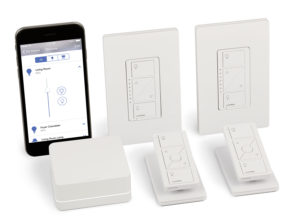
Leviton Samsung Smart Things
Leviton and Samsung partnered together to create a very user-friendly smart automation bridge and smart device portfolio. Like a majority of android products, Smart Things is compatible with IFTTT which allows users to create and share their own programming over the internet. Samsung has also invested in the use of Sensors allowing the user to know when doors and windows are opened or closed.
Smart Things and its hardware communicate with each other using Mesh Technology and Radio Frequency to communicate over the Wifi frequency range. This frequency is shared with other technologies such as cell phones, microwaves, Zigbee, and Z-wave creating both a pro and con with the technology. The pro being it can communicate with virtually anything that operates on this frequency, the con being that it is trying to communicate on a very noisy frequency. With mesh communication technology, you are able to place devices slightly farther away from the bridge, but the signal must bounce through every device on its way before getting back to the bridge. The Smart Things Hub can also communicate with the Lutron Caseta PRO Bridge, allowing the flexibility of android based programming with the quality of Lutron’s dimming capabilities and window coverings.
Eaton Halo Home
Eaton is a leader in electrical equipment and recently joined the home automation game. The Halo Home light fixtures and trims communicate over the Wifi frequency to their stand-alone smart phone application. This allows smart control of individual light fixtures without having to invest in a bridge type system. This is not a full home automation option and does not partner with third party manufacturers.
Halo Home offers an easy entry point into controlling your lighting without having the investment and programming of the larger systems.
Philips Hue
Philips is an industry leader in light bulbs and light fixtures. The Philips Hue bulbs allow for up to 50 bulbs on one hub, with full color (ROYGBIV) control through their own smart application. As the bulbs are only controlled through the app and not via a smart switch, any switches controlling Hue bulbs must be left in the on position for the app to control them. They communicate over the Wifi network with your smart phone through the Philips Hue Bridge which also allows communication with Friend of Hue. This includes; Amazon Alexa, Apple Home Kit, Google Assistant, Microsoft Cortana, IFTTT, Logitech, Nest, Lutron and Samsung Smart Things.
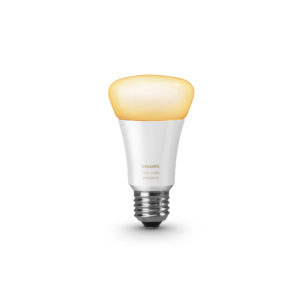

Nest
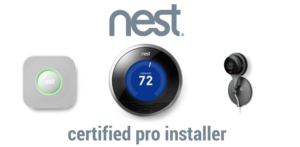

Nest is a leader in high quality smart home accessories that come together to complete your home automation system. Nest was founded by Tony Fadell and Matt Rogers, previously from Apple and developers of the iPhone when they decided to form Nest Labs in 2010. Google acquired Nest Labs in 2014 for $3.2 Billion and with this influx of funds allowed for the development of their full line of products; Nest Learning Thermostat, Nest E Thermostat, Nest Protect, Nest Indoor and Outdoor Cameras, Nest Secure, Nest Hello and Nest x Yale Lock.
All Nest products currently communicate with each other through the Nest smart phone app. As of June 2019, the Nest app is being phased out and all Nest integration will be pushed to the Google Home app. With Google Nest being the new brand for smart home technology, Google realizes the need for simple and complete home control from a single application. With the launch of the Google Nest Home Hub, all your lighting, audio and other smart home products will be readily accessible without having the launch an app.
Nest also integrates seamlessly with Lutron as well as Google Assistant and Amazon Alexa (Hopefully Google plays well with Alexa in the future! Exciting stuff happening). Not only do the Nest products communicate with other smart home devices and hubs, but they integrate with each other. Meaning, when your Nest Protect smoke detector goes into alarm, it is internally programmed to turn on your Lutron lights, open your Lutron Shades and activate the Nest Cameras to start recording the incident.
The Nest Cameras can be set to detect motion and turn on lights accordingly, the doorbell and lock integrate with Google assistant allowing you to speak to your front door through your assistant as well as pushing the video directly onto your TV all through a voice command.
Nest truly is a leader in its field and its line of products are priced accordingly and for good reason. Since Google has taken over, we have seen constant innovation and changes in the company. All leading towards one power house leading brand, and from the looks of it, looking to make big waves in the industry! To read more about how Nest products compare and how they can integrate with the rest of your home. You can read through our list of Ultimate Guides including; Doorbells, Locks, and Thermostats.
Ring
Ring started off as a doorbell company by inventor Jamie Siminoff. He gives credit to his invention to his wife claiming “Inventors come up with a lot of bad ideas and she has heard them all. One night I shared my idea for reinventing the doorbell. She loved it! – (Calling it) Caller ID for the front door!”
Ring is now owned by Amazon as of April 12 2018, and as of this merger Amazon dropped the price of the Ring Video Doorbell to $99.99. Ring now develops a host of products as well as its flagship doorbell such as; Spotlight Cam Battery, Stick up Cam Battery, Alarm Security Kits, and Security Lighting with Cameras. Ring is so dedicated to making communities safer, it has launched its Neighbors App, which allows you to communicate with your neighbors by sharing your videos and commenting on potential risks and hazards. Ring devices are compatible with a variety of home automation systems, and as of late 2020 directly compatible with Lutron Caseta and Select. Ring can be chained together with other smart devices through IFTTT. It does not communicate and integrate directly from the manufacturer. To learn more about the Ring doorbell and how it stacks up against the rest of the market, check out our Ultimate Guide to Smart Doorbells
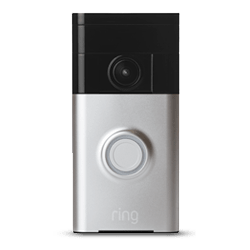

Sonos
Sonos is the first wireless home sound system that easily allows you to fill your home with music, movies and TV. Sonos streams your content over your local Wifi network, which is much higher quality and more secure then streaming over Bluetooth. Sonos integrates seamlessly with Lutron and partners with over 80 streaming services globally, so there is never a shortage of music, radio, podcasts or audio books to listen too. Sonos’ main focus was not in the development of a Smart Product, it was in the development of amazing sound quality followed by integration throughout the home. You can start your Sonos system by simply purchasing and installing their plug and play speaker system. As you soon learn to love their amazing products, you can add more speakers, or integrate your already wired speakers and amplifier using the Sonos Connect. Sonos speakers are now available with built in Amazon Alexa bringing convenient voice control to your home sound system.
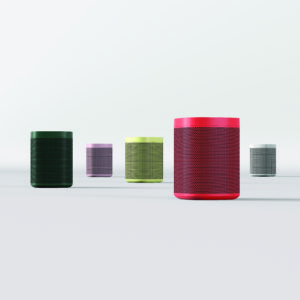

Mysa
Mysa is a proudly Canadian company based out of New Foundland. They are the first company to bring smart phone compatible technology to line voltage heating systems. Their devices are reasonably priced and to put it simply, work as intended. Their clean white touch screen design allows the thermostat to blend into any décor and with its ability to integrate with Google, Amazon, Lutron, Home Kit and IFTTT it fits into every smart home application. Mysa is currently only available through their website and not available through retail outlets. To learn more about smart thermostats, read our Ultimate Guide to Smart Thermostats
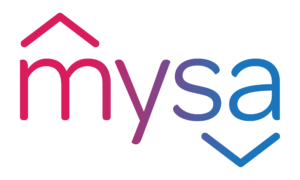

Internet Service Provider Systems
(IE Rogers home service)
One of the easiest entry points into home automation is to add onto your existing internet subscription and have your ISP install smart home products at a low monthly cost. Rogers is able to tailor build a package for you including cameras, thermostats, light bulbs and door locks. These systems do not integrate with third party manufacturers and only function as long as you have your monthly subscription. You are able to keep the hardware, but without the functioning smart phone app (available through paid subscription only) it really serves no purpose or added value. These systems are a great entry point and have a very low starting cost. For those looking to get into home automation, it may seem like a great start, but you will soon realize that your ability to expand the system is hindered and you are tied to your ISP for every function.
August Home
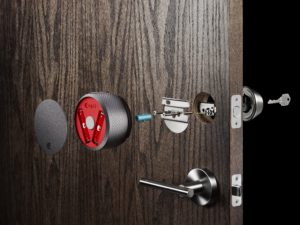

August Home started its life as a smart lock company based in California, although still mainly a Smart Lock company, they have added onto their line of products to encompass smart locks and doorbells. Wanting to stay true to its product line of smart home access, August ahs partnered with a host of third-party developers such as; Nest, IFTTT, Honeywell, SimpliSafe, Logitech, Yonomi, Wink, Xfinity, Z-Wave, Leviton, Smart Things and Control 4. You can read more about how August Home products compare with the competition in our Ultimate Guide to Smart Doorbells and our Ultimate Guide to Smart Locks.
Apple, Google, Amazon and Microsoft
These are the biggest names in technology, they own a majority of the companies in the smart home space and one of their products can be found in almost every home around the world. They all function as intended and work through cloud based programming and smart phone applications. Our only suggestion is to figure out which products work for you and design your system accordingly. For example, If you are an Apple user, you already know their products are amazing, but do not like to play well with others. If you are an Android user (like a vegan, most noticeable by their inability to keep their opinions of apple to themselves) you have the ability to integrate with everything other then Apple products, and you are bitter that you can’t. Microsoft Cortana is a new entry into the field and is does not integrate with as much as the other players, yet, but you are able to integrate with your computer.
The two big players making huge moves in the industry are Google and Amazon. Our choice is to go with Google, but that is a biased opinion as we are Nest certified Installers and already love integrating their products with Lutron. With Googles re branding of Nest products to Google Nest, and their launch of the very reasonably priced Google Nest Hub, they really are working at becoming the main point of contact for your smart home.
Basically, there is no right or wrong way to go, just make sure you know what products you already own, what products you would like to have and follow a plan to ensure all your products will work together. If you are unsure about which route you want to take, and what the most important aspects of your smart home will be, call a local smart home professional to discuss your options. The biggest mistake you can make is investing hard earned money into a system that you will either outgrow, or will not be fully compatible with the products you really want. Like anything, do your homework and talk to as many people as you can! Try and convince your friends to buy some products first so you can test them out at their house first! To read more about the differences between he virtual assistants, read our Ultimate Guide to Virtual Assistants
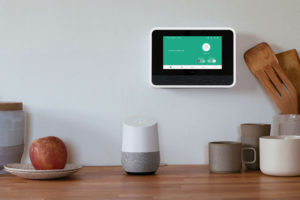

Intermediate Systems
As amazing as the entry level home automation is, it is still lacking in a few key spots. Some industry downfalls are; a lack of programming capabilities, and a lack of quality hardware options to meet all installation requirements, they are limited by number of devices and physical size of the system. There are a few intermediate systems that fill the gap for those looking to expand on their entry level systems, but do not have the same budget or requirements of the advanced home automation systems. Like all three levels of home automation, all products integrate fully through all levels of products. If there is an entry level product you love, 99% of the time it integrates just as well with Intermediate and Advanced systems.
Lutron Ra2 Select
We start our list off again with a Lutron product and with good reason, Ra2 Select is basically a Ra2 system with a few minor detail changes. Lutron was founded by Mr. Joel Spira in the 1950’s. Mr. Spira will always be known and highly regarded as a pioneer in lighting control and home automation. Mr. Spira was the inventor of the Triac dimmer and his family owned and run company continues to lead the industry in lighting control. Ra2 Select uses the exact same hardware as its big brother system Radio Ra2 but the major difference is it does not require computer-based software to program. This means you do not require hours of programming and physically uploading the system onto the main bridge, it can all be done through a smart device and uploaded onto the cloud. Ra2 Select, like Ra2 and Caseta all work on Lutron’s proprietary radio frequency (Clear Connect Technology) signal, allowing for instant communication between all its devices and having zero outside interference from Wifi and cell phone signals. Clear connect technology is the most reliable and proven technology available on the market with home automation systems today.
Ra2 Select can accommodate up to 100 device addresses which is double that of Caseta. The second major upgrade from Caseta systems is the ability to have wired 3 way switching as well as remote switching available. The main difference between Ra2 Select and Radio Ra2 is the amount of hardware option available. Ra2 select does not accommodate Grafik T dimmers, keypad controls (only pico keypads), or Grafik Eye systems. If you are looking to expand on the Caseta system, but do not want the full price tag of Radio Ra2, then Select if the best option available.
Insteon
Insteon is a cost- effective dual band network technology optimized for home management and control. Insteons sister company, Smarthome, has been around since 1992 and was developed on the premise of X10 powerline modulation technology. Powerline modulation means Insteon systems use the existing wires in your home to send a signal between devices without the need for running communication cables like older systems. The downfall in this type of technology is that a large amount of lag and interference can be found when other devices are being used in the home and on the same powerlines. The saying ‘Press and Pray’ was dubbed for the aging X10 technology and in 2000 Insteon released its dual band technology. Dual band technology allowed for the devices to communicate over powerline modulation as well as using Wifi frequencies to allow a mesh topology. Insteons main selling feature that lets it stand out from the rest of the entry level systems is its ability to support keypads. Although what you make up for in keypads still does not make up for what the system lacks in communication technology.
Vivint
Vivint is a very powerful smart home product, but is designed and geared towards smart home security rather than lighting and automation. On the front page of the Vivint website, their slogan says “Protect what matters most with smart home protection”. The Vivint hub looks like a high-tech alarm panel and allows internet-based integration with its smart app. Allowing remote control of cameras, door locks, doorbells and Phillips Hue light bulbs. If security is your number one priority and not integrating with AV or lighting control, then Vivint is a great product.
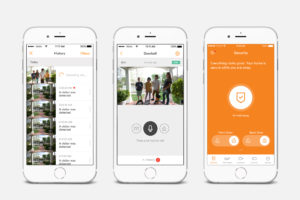

Alarm.Com
Alarm.Com, much like Vivint is a very powerful smart home product designed on the basis of home security. It gives you the ability to control Alarm.Com compatible products all through the alarm panel, tablets and smart devices. Alarm.Com partners with both Lutron and Z-Wave lighting control so you are able to integrate either system into the base programming. Alarm.com also works with the multiple Z-wave devices to complete your smart home installation and control it all from a centralized app. If home security is your priority then you have a tough decision to make between Alarm.Com and Vivint as both platforms are very similar. We choose Alarm.com… but that is our biased opinion.
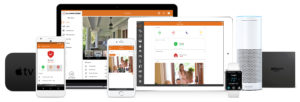

Elan
The Elan system is another great product available out of the Intermediate home automation systems. Like the Alarm.Com or Vivint system, the Elan system is geared more towards a single aspect of home automation. Elan is geared towards security control. Its proprietary app allows complete control of lighting, media, cameras, intercoms and temperature controls, but falls short on the window coverings category when compared to the Lutron systems. The other downfall with Elan systems is they are only partnered with between 50-100 third party integrators, so although you may be able to do a majority of what you want to do, it is not as complete a system as Alarm.Com or Vivint.
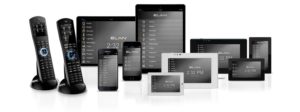

Advanced Systems
The advanced systems are where we can really go crazy with the programming and start reaping the benefits of our investment. These advanced systems are not for the faint of heart and a whole home price tag similar to most brand-new vehicles is easily attainable. But with great power comes great responsibility, and you can literally program your home to do almost anything you can think or dream of. Most of these systems can all do the same basic functions as one another, it’s the minor details that set them apart from each other.
Lutron Radio Ra2
The advanced systems list starts with the middle weight fighting in the heavy weight category. Lutron Radio Ra2 is by far the most affordable system in this category and also the most basic.
Radio Ra2 offers 90% of the automation most people would need in their home at a price point far below the rest of the advanced systems. This system has all the capabilities of Caseta and Ra2 Select, but you now have access to 200 devices, a full line of wired keypad controls, Grafik T dimmers and keypads which are, for lack of a better term, orgasmic eye candy. And a full line of draperies, roller shades and honeycomb blinds. Radio Ra 2 does not rely on cloud-based programming and requires the installers to manually program each setting from a computer and upload it into the bridge. Radio Ra2 lighting control offers the best dimmers available as well as the best drapes and blinds. Where Radio Ra2 really starts to shine above the lower levels with its capabilities to work with Keypads. Rather then just making your lighting smart, we can now start thinking of our lighting in ‘scenes’ rather then individual loads. Most larger systems that integrate completely with audio video are using Lutron dimmers and blinds as their lighting control and filling in where the system falls short. If you are interested in home automation and the entry level systems are just not cutting it, chances are a Radio Ra2 system will fit your needs perfectly.
Lutron Homeworks
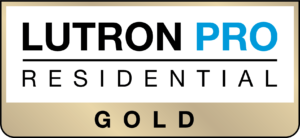

This is Lutron’s grand-daddy home automation system. It was created to compete with the other advanced systems without the downfalls of the lighter Ra2 system. Again, Lutron is the only smart home system using the clear connect technology and operating on its own proprietary frequency. Homeworks allows a much wider variety of dimmer and keypad control, with their designer, architectural, Paladiom and Alisse lines and complete Audio Video and security system integration. With the touch of your keypad, Homeworks seamlessly lowers your shades, dims your lights, draws back the curtains on your theater screen and starts your movie for you. Homeworks installers are also qualified to offer Lutron’s Ivalo line of fixtures, these are museum grade fixtures sporting true 1% dimming capabilities. One of the biggest features that Homeworks has over Radio Ra2 is conditional logic. Conditional logic means the system can check the status of conditions and change the desired output based on the current conditions. This sounds confusing but makes more sense when thought of in a practical statement, meaning; By pressing the “Goodnight” scene, close all blinds, turn off all lights except for rooms with people occupying them, and close the garage door if it is left open. The system will check the rooms for occupancy and check if the garage doors are open, essentially, the system thinks for itself. Homeworks is truly the complete package in home lighting control and offering the best technology and reliability available. With Lutrons direct integration with Josh.AI you can take advantage of this partnership to gain full control of your home seamlessly without having the expense of the other automation systems and using their head end. Although Josh.AI does require a paid subscription (because they dont sell your private information) Lutron does not require any subscription fees to access their systems remotely and use their smart phone apps.
As of late 2020, Lutron announced the release of their Ketra lighting systems which truly revolutionized the way we live with lighting. To learn more and simply be amazed take a look at the Ketra Experience website. It is also worth exploring the Palladiom shading solution and latest Alisse keypads for some of the newest and most stunning finishes available.
Savant
Savant markets itself as being a luxury whole home system designed for the way you live. It is an ultra-chic system designed towards the audio video side of automation. As Lutron is the leader in lighting control, Savant is fighting to be leader in Audio Video automation. Offering its proprietary control designs allowing seamless and full integration with your sound systems and theaters. Savant also offers its own line of light fixtures, controls and draperies. Unfortunately, Savant does not have as many integration partners as the other developers in this field, and runs into much of the same issues as all the other Zigbee or Z-wave style controls with delays and cross talk. With the advent of the new Lutron QSX processor for homeworks, Savant is one of the few automation companies that does not work with the new Lutron platform.
Control 4
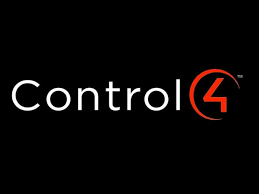

Probably the most installed home automation system out of the advanced systems. Control 4 is commonly recognized as the top residential brand in home automation and offers complete control of your lighting, security, draperies, cameras and audio video systems. Control 4 offers full engravings on all its switches and not just its keypads like the Lutron products. If you are looking for a complete home automation system Control 4 will not fall short and will simply leave you breathless. They have partnered with the most third-party providers as well as developing most products themselves. There are limited Control 4 installers in any given area, and they have strict guidelines for who is accepted to be a registered installer. Keeping this limit on service providers ensures they keep their price point where they want it and their products are not falling into the “wrong type of installs”. As it says on the Control 4 website “With one touch, dim the lights, play music, turn up the heat, lock the doors and arm the security system. Check in on your home from your smartphone, no matter where you are. Press a “Goodnight” button that will put your house to sleep, turning off all lights and locking all doors. With Control4, your options are virtually limitless.” The only downfall we have come across and continue to repeatedly hear is the issues with the lighting control and Z-Wave technology used in the Control4 switches. The work around is to install Lutron dimmers, keypads and Lutron shades and have the Control4 programmer install the Lutron module into their system to operate both systems seamlessly. It should be noted that in order to have remote access a subscription fee is required.
Crestron
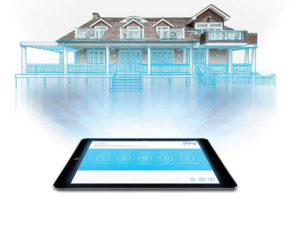

Finally, we end off the list of home automation giants with the world’s biggest automation company. This one is short and sweet, Crestron is the world leader in automation offering complete control of both residential and commercial spaces. They have a solution to control your mansion as well as your high-rise office tower downtown. If money is not an option and you are looking for the best of the best, then Creston is the answer for you. Yes, you can probably find another option that may be able to do almost everything Crestron is capable of, but when you want it all, there is no substitute for the best. Full stop.
Convinced? If you are still on the fence, then Crestron may not be the product for you. If you know what you want, enjoy the ride to the top and remember us when you are there!


